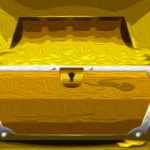An intriguing aspect of the current cycle is the challenge it poses to conventional ideas about Bitcoin usage worldwide. New practices are emerging, reshaping how different cultures interact with this digital asset and defying established norms.
The Rise of Seedless Security Models
One notable trend in this dynamic landscape is the resurgence of seedless security models for safeguarding Bitcoin private keys. Advocates argue that traditional security measures are failing to meet the needs of an expanding user base. As custodial alternatives mature and ETF products gain prominence, concerns are raised about the complexity of future self-custodial solutions for users.
The Debate Around Seed Phrases
Security experts have often highlighted seed phrases as a stumbling block in the journey towards mainstream Bitcoin self-custody adoption. Industry veteran Jameson Lopp has long discussed the challenges posed by this security model and founded Casa, a multi-signature wallet provider, to address these issues.
The Challenges of Seed Phrases
Despite advancements in Bitcoin products, self-custody remains a risky endeavor for individuals with limited tech proficiency. Phishing attacks targeting users' funds via compromised seed phrases are a recurring threat, as evident from recent incidents involving popular wallet providers like Trezor.
The Divide in Security Practices
While some advocate for hardware wallets as a more secure option, many users are hesitant to embrace this approach. Shehzan Maredia of Lava notes a significant gap between security product developers and the broader Bitcoin market, with many users either struggling to follow instructions or opting for custodial services.
Seedless Solutions and Innovations
While Casa led the way in seedless wallets, few have followed suit. Despite the enhanced security of self-custodial applications, the learning curve remains steep for many users. However, innovations like passkeys, as seen in Coinbase's Smart Wallet, offer promising alternatives.
Lava's Seedless Solution
Lava's Vault, inspired by older models like the Photon SDK, leverages a seedless cloud backup approach. By storing encrypted seeds securely in the cloud and utilizing a PIN-based authentication system, Lava aims to provide a robust yet user-friendly self-custody solution.
Future of Security Protocols
As the industry evolves, security protocols like Lava's Smart Key are expected to adapt to users' needs and risk profiles. Features such as 2FA, withdrawal limits, and whitelisted addresses are being incorporated to enhance user control and flexibility.
Redefining Seed Phrases
While seed phrases remain crucial in the security landscape, there is a growing consensus among experts that future users should be shielded from direct exposure to them. Casa CEO Nick Neuman emphasizes the importance of abstracting seed phrases from most users, advocating for a hands-off approach to key management.
Frequently Asked Questions
Is it a good retirement strategy to buy gold?
Although it may not look appealing at first, buying gold for investment is worth considering when you consider the global average gold consumption per year.
The most popular form of investing in gold is through physical bullion bars. You can also invest in gold in other ways. You should research all options thoroughly before making a decision on which option you prefer.
If you don’t have the funds to invest in safe places, such as a safe deposit box or mining equipment companies, buying shares of these companies might be a better investment. If you need cash flow to finance your investment, then gold stocks could be a good option.
You also can put your money into exchange-traded funds (ETFs), which essentially give you exposure to the price of gold by holding gold-related securities instead of actual gold. These ETFs may include stocks that are owned by gold miners or precious metals refining companies as well as commodity trading firms.
Can the government steal your gold?
The government cannot take your gold because you own it. You worked hard to earn it. It belongs to you. But, this rule is not universal. You can lose your gold if you have been convicted for fraud against the federal governments. If you owe taxes, your precious metals could be taken away. You can keep your gold even if your taxes are not paid.
What is a Precious Metal IRA?
An IRA with precious metals allows you to diversify retirement savings into gold and silver, palladium, rhodiums, iridiums, osmium, or other rare metals. These are “precious metals” because they are hard to find, and therefore very valuable. These are good investments for your cash and will help you protect yourself from economic instability and inflation.
Bullion is often used to refer to precious metals. Bullion refers only to the actual metal.
Bullion can be bought via various channels, such as online retailers, large coin dealers and grocery stores.
You can invest directly in bullion with a precious metal IRA instead of buying shares of stock. This means you'll receive dividends every year.
Precious metal IRAs have no paperwork or annual fees. Instead, you pay only a small percentage tax on your gains. Additionally, you have access to your funds at no cost whenever you need them.
How much should I contribute to my Roth IRA account?
Roth IRAs allow you to deposit your money tax-free. These accounts cannot be withdrawn until you turn 59 1/2. However, if you do decide to take out some of your contributions before then, there are specific rules you must follow. First, you cannot touch your principal (the original amount deposited). This means that regardless of how much you contribute to an account, you cannot take out any more than you initially contributed. If you are able to take out more that what you have initially contributed, you must pay taxes.
The second rule is that your earnings cannot be withheld without income tax. Withdrawing your earnings will result in you paying taxes. For example, let's say that you contribute $5,000 to your Roth IRA every year. In addition, let's assume you earn $10,000 per year after contributing. On the earnings, you would be responsible for $3,500 federal income taxes. You would have $6,500 less. Since you're limited to taking out only what you initially contributed, that's all you could take out.
If you took $4,000 from your earnings, you would still owe taxes for the $1,500 remaining. On top of that, you'd lose half of the earnings you had taken out because they would be taxed again at 50% (half of 40%). You only got back $4,000. Even though you were able to withdraw $7,000 from your Roth IRA,
There are two types of Roth IRAs: Traditional and Roth. A traditional IRA allows you to deduct pre-tax contributions from your taxable income. To withdraw your retirement contribution balance plus interest, your traditional IRA is available to you. You can withdraw as much as you want from a traditional IRA.
Roth IRAs are not allowed to allow you deductions for contributions. However, once you retire, you can withdraw your entire contribution plus accrued interest. Unlike a traditional IRA, there is no minimum withdrawal requirement. You don't need to wait until your 70 1/2 year old age before you can withdraw your contribution.
What are the pros & cons of a Gold IRA?
The main advantage of an Individual Retirement Account (IRA) over a regular savings account is that you don't have to pay taxes on any interest earned. An IRA is a great option for those who want to save money, but don't want tax on any interest earned. This type of investment has its downsides.
You may lose all your accumulated savings if you take too much out of your IRA. The IRS may prohibit you from withdrawing funds from your IRA before you are 59 1/2 years of age. If you do decide to withdraw funds from your IRA, you'll likely need to pay a penalty fee.
A disadvantage to managing your IRA is the fact that fees must be paid. Many banks charge between 0.5%-2.0% per year. Other providers may charge monthly management fees, ranging between $10 and $50.
You can purchase insurance if you want to keep your money out of a bank. Many insurers require that you own at least one ounce of gold before you can make a claim. Some insurers may require you to have insurance that covers losses up $500,000.
If you are considering a Gold IRA, you need to first decide how much of it you would like to use. Some providers limit how many ounces you can keep. Others allow you to pick your weight.
You'll also need to decide whether to buy physical gold or futures contracts. The price of physical gold is higher than that of gold futures. Futures contracts offer flexibility for buying gold. You can set up futures contracts with a fixed expiration date.
You will also have to decide which type of insurance coverage is best for you. The standard policy does not include theft protection or loss caused by fire, flood, earthquake. However, it does cover damage caused by natural disasters. If you live in a high-risk area, you may want to add additional coverage.
Insurance is not enough. You also need to think about the cost of gold storage. Insurance doesn't cover storage costs. For safekeeping, banks typically charge $25-40 per month.
Before you can open a gold IRA you need to contact a qualified Custodian. Custodians keep track of your investments and ensure compliance with federal regulations. Custodians can't sell assets. Instead, they must retain them for as long and as you require.
Once you've decided which type of IRA best suits your needs, you'll need to fill out paperwork specifying your goals. Your plan should include information about the investments you want to make, such as stocks, bonds, mutual funds, or real estate. Your monthly investment goal should be stated.
After completing the forms, send them along with a check or a small deposit to your chosen provider. After reviewing your application, the company will send you a confirmation mail.
You should consult a financial planner before opening a Gold IRA. A financial planner is an expert in investing and can help you choose the right type of IRA for you. You can also reduce your insurance costs by working with them to find lower-cost alternatives.
Statistics
- (Basically, if your GDP grows by 2%, you need miners to dig 2% more gold out of the ground every year to keep prices steady.) (smartasset.com)
- Gold is considered a collectible, and profits from a sale are taxed at a maximum rate of 28 percent. (aarp.org)
- Indeed, several financial advisers interviewed for this article suggest you invest 5 to 15 percent of your portfolio in gold, just in case. (aarp.org)
- Instead, the economy improved, stocks rebounded, and gold plunged, losing 28 percent of its value in 2013. (aarp.org)
- This is a 15% margin that has shown no stable direction of growth but fluctuates seemingly at random. (smartasset.com)
External Links
irs.gov
wsj.com
- Saddam Hussein’s InvasionHelped Uncage a Bear In 1989 – WSJ
- Are you interested in keeping gold in your IRA at-home? It's Not Exactly Lawful – WSJ

















